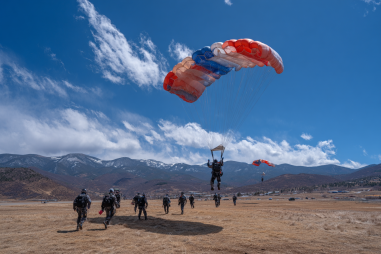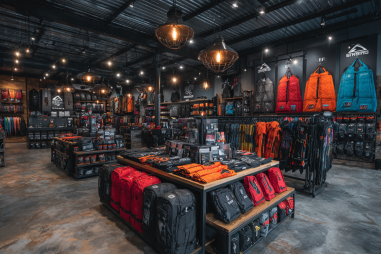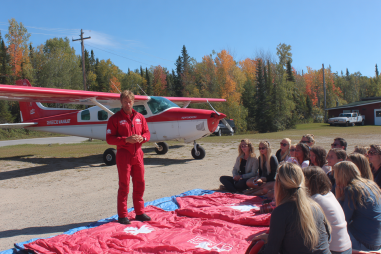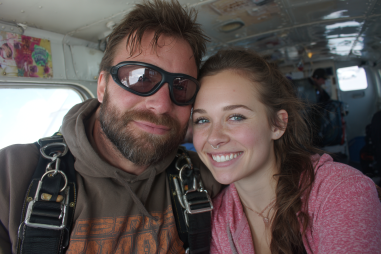Skydiving is an exhilarating sport that demands precision, skill, and above all, reliable equipment. Your skydiving gear isn’t just expensive—it’s your lifeline during a jump. Keeping your gear in excellent condition isn’t merely a matter of preserving investment; it’s a crucial safety responsibility. Whether you’re a seasoned jumper or just starting, understanding proper maintenance ensures your equipment performs flawlessly every time you take to the skies. In this guide, we’ll walk you through essential skydiving gear maintenance tips that help maximize longevity and maintain safety.
Importance of Regular Maintenance
Regular maintenance of your skydiving gear is vital for safety and performance. Parachutes and associated equipment are subjected to intense conditions during every jump—high altitudes, rapid airflows, and physical strain during deployment. Over time, this wear and tear can compromise the integrity of your equipment. Scheduled inspections and upkeep help identify potential issues before they become dangerous failures. Moreover, well-maintained gear operates more smoothly, reducing the risk of malfunctions and increasing your confidence in each jump. Ignoring maintenance not only jeopardizes your safety but may also void warranties or insurance provisions.
Cleaning Your Parachute Canopy and Lines
Cleaning is one of the foundational aspects of gear care. Your parachute canopy and lines accumulate dirt, sweat, salt, and other contaminants that can degrade the fabric and line strength over time.
- Canopy Cleaning: Use cold or lukewarm water to gently rinse the canopy fabric. Avoid harsh detergents or bleach, which can weaken the nylon fibers. If necessary, use a mild soap designed for delicate fabrics and rinse thoroughly.
- Cleaning the Lines: The suspension lines can be wiped down carefully with a damp cloth. Avoid tugging or putting excessive strain on the lines. If they are heavily soiled, a gentle soak followed by thorough drying is recommended.
- Drying Correctly: Always allow your parachute to air dry completely in a shaded area, away from direct sunlight or heat sources. Sunlight can degrade the fabric’s UV resistance, while heat can distort nylon properties.
Regularly cleaning your canopy and lines prevents abrasive dirt and contaminants from weakening your gear over time.
Inspecting the Harness and Container for Wear
The harness and container system holds your parachute and directly affects deployment and comfort. Regular inspections should focus on:
- Webbing and Stitching: Look for fraying, broken stitches, or worn webbing areas. Any signs of damage could compromise the harness strength and should be addressed immediately.
- Buckles and Metal Components: Ensure buckles, quick-release mechanisms, and rings function smoothly and show no signs of corrosion or deformation.
- Container Fabric: Check for tears, excessive wear, or weakened areas that could impact the deployment sequence.
Consistent inspection and minor repairs can significantly extend the life of your harness and container while ensuring safe operations during jumps.
Maintaining Helmets and Altimeters
While helmets and altimeters are often overlooked in maintenance routines, they’re crucial for jump safety and situational awareness.
- Helmet Care: Helmets protect you from impacts and head injuries. Check straps, padding, and the exterior shell regularly for cracks, dents, or loose fittings. Clean the interior liners with mild soap as needed, and avoid using harsh chemicals that could degrade protective materials.
- Altimeter Functionality: Ensure your altimeter, whether analog or digital, is clean, calibrated, and functioning accurately. Replace batteries regularly if applicable, and check for fogging or water intrusion that could impair readings.
Proper care of helmets and altimeters helps maintain their reliability and comfort.
Proper Storage Conditions
How you store your skydiving gear between jumps heavily influences its lifespan. Here are key storage tips:
- Cool, Dry Environment: Keep your gear in a place free from excessive moisture, humidity, and temperature fluctuations. Damp environments can promote mildew and corrosion.
- Avoid Direct Sunlight: UV exposure breaks down nylon and webbing materials, so store gear away from windows or outdoor areas where sunlight is strong.
- Avoid Chemical Exposure: Store your gear away from chemicals such as gasoline, solvents, or household cleaners, which can degrade fabric and rubber components.
- Use Proper Bags and Containers: A quality rig bag designed for skydiving gear provides protection from abrasion and contaminants.
Consistently following these storage guidelines keeps your equipment in prime condition, ready for safe jumps.
When to Retire Skydiving Equipment
Knowing when to retire your gear is just as critical as maintaining it. Skydiving equipment has recommended lifespan limits set by manufacturers and industry standards, which take wear, usage frequency, and exposure into account.
- Parachute Canopies: Usually retired after around 100-200 jumps, but visible damage or fabric degradation can necessitate earlier replacement.
- Lines and Webbing: Suspicious fraying, excessive stretch, or loss of strength mean it’s time to replace these components.
- Harness and Container: Pay attention to manufacturer’s timeframes, commonly around 10 years, but retire sooner if significant wear or damage is found.
- Helmets and Altimeters: Helmets should be replaced after any impact; altimeters replaced or recalibrated as specified in their manuals.
Don’t push your gear beyond recommended limits—remember that your parachute and safety equipment directly support your life.
DIY Checks vs. Professional Inspections
While routine visual checks and cleaning can be handled by you, professional inspections are indispensable for thorough safety evaluations.
- DIY Maintenance: Include cleaning, checking for visible damage, tightening components, and carefully packing your rig. Training on how to do basic inspections properly is essential before attempting.
- Professional Riggers: Certified riggers perform detailed inspections using specialized tools and experience to detect issues not visible to the untrained eye. They also conduct repacking and repairs following strict standards.
Combine both approaches—regular personal upkeep and scheduled professional servicing—to keep your gear in optimal condition.
Tips for Packing and Handling Gear Carefully
Packing your parachute correctly is critical to safe deployments. Follow these best practices:
- Use a Flat, Clean Surface: Pack on a clean, non-abrasive area free from sharp objects.
- Avoid Excessive Force: Handle canopy fabric and lines gently—avoid sharp bends or pinching that can weaken fibers.
- Follow Manufacturer Guidelines: Learn and adhere strictly to packing instructions for your specific rig.
- Stay Organized: Arrange lines and panels carefully to prevent tangles and twists.
- Be Mindful of Weather: Do not pack or unpack gear in high winds or dirty environments that could introduce debris.
Good packing habits sustain the quality and functionality of your parachute and minimize the risk of malfunctions.
Keeping Safety at the Forefront with Gear Maintenance
Your commitment to regular skydiving gear maintenance isn’t just about prolonging the life of your equipment—it’s a direct investment in your safety and enjoyment. By staying vigilant with cleaning, inspections, proper storage, and responsible gear handling, you protect yourself and others every time you jump. Remember that along with your training and experience, reliable gear is a pillar of successful skydiving. Prioritize your equipment’s care just as much as perfecting your freefall and canopy skills. With attentive maintenance and professional support, you can confidently embrace the thrill of every jump with peace of mind.







